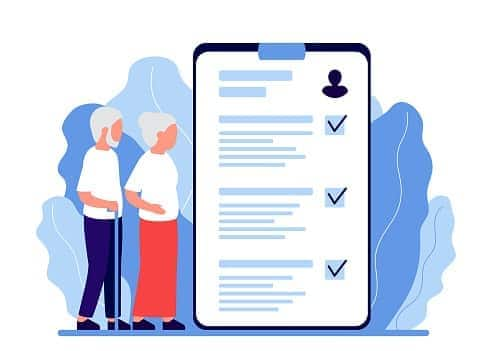Does insurance cover mental health?
If your insurance plan falls under the Mental Health Parity and Addiction Act (and since the ACA, most health plans do), your insurance company is required to cover mental health treatment. In addition to the federal requirements, many states have additional rules that apply to mental health care, expanding the reach of the federal law.
Not only are they required to provide coverage, but your plan also can’t charge higher copays than for physical health care or restrict behavioral health coverage. Insurers are also restricted from capping mental health services.
As with any treatment plan, however, your insurer can review the medical necessity of the treatment and decide whether to approve future visits.
Does health insurance cover therapy?
Health insurance covers mental health visits just like it handles all office visits.
Previously, a health plan in the individual market could deny you or charge much higher rates if you had pre-existing conditions, including mental health conditions. The ACA changed that.
Health insurance covers the following mental health and substance abuse treatment:
- Outpatient mental health care
- Inpatient treatment for mental health
- Prescription drugs
- Emergency care
- Labs
Depending on the plan, you will pay more for out-of-network providers or have no out-of-network coverage at all. For instance, preferred provider organization (PPO) plans usually allow for out-of-network care, but charge higher deductibles and copays. Health maintenance organization (HMO) plans typically don’t cover any out-of-network care.
How much does inpatient mental health treatment cost with insurance?
Mental health costs vary by health plan. If you are receiving inpatient care, you can expect to pay the same out-of-pocket costs (coinsurance amounts and deductibles) that you would be charged for any other inpatient treatment.
Of course, the type of treatment you receive and how long you require treatment will determine the overall cost of your care.
Health insurance finder tool




COBRA
Learn more about COBRA


Medicare
Medicare costs vary depending on which option you choose.
Learn more about Medicare costs.


Medicaid


Parent's employer-sponsored health insurance

Spouse's employer-sponsored health insurance

- PPO
- HMO
- HDHP
- EPO
Employer-sponsored health insurance

- PPO
- HMO
- HDHP
- EPO
- PPO
- HMO
- HDHP
- EPO
Preferred-provider Organization (PPOs)
- Pay higher premiums with a lower deductible
- You have access to more providers, but pay much more for health insurance
- You don't want to choose a primary care physician
- You don't want to get a referral
- You want the ability to get out-of-network care
Find out more about the differences between plans
Health maintenance organization (HMO)
- Pay higher premiums with a lower deductible
- Restricted network of providers with lower premiums
- You want to choose a primary care physician
- You don't mind getting a referral
- You don't care about the ability to get out-of-network care
Find out more about the differences between plans
High-deductible health plans (HDHPs)
- Pay lower premiums with a higher deductible
Find out more about the differences between plans
Exclusive provider organization (EPO)
- Restricted network of providers with lower premiums
- You don't want to choose a primary care physician
- You don't want to get a referral
- You don't care about the ability to get out-of-network care
Find out more about the differences between plans


Learn more about individual insurance plans

Best health insurance for mental health coverage
Health insurance companies must cover mental health, so any health insurance should cover you, but plan costs and access to providers will vary. When choosing a plan, it’s best to consider the balance of monthly premiums and out-of-pocket costs.
If you anticipate needing regular mental health treatment, it might be worthwhile to choose a plan with a higher monthly premium but lower out-of-pocket costs. It’s also vital to look at the network and make sure the doctors and clinics you need are covered.
The best insurance for mental health really depends on your specific needs, so compare your options and consider your budget before you buy
Do short-term health plans cover mental health care?
Short-term health plans don’t usually cover mental health and substance abuse care.
Most states allow short-term health plans, which let people sign up for a year with the chance to extend the plan for three years. These low-cost plans don’t offer the same protections found in other plans and are only meant to be a temporary solution.








